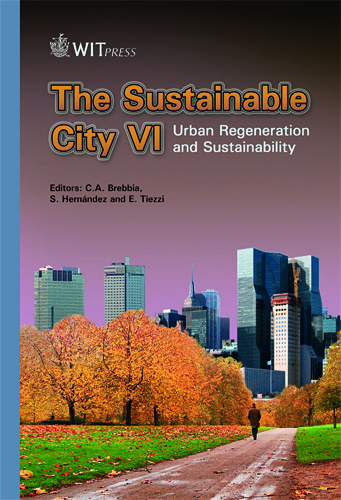Modelling Skin Temperature Of A Human Exercising In An Outdoor Environment
Price
Free (open access)
Transaction
Volume
129
Pages
11
Page Range
125 - 135
Published
2010
Size
280 kb
Paper DOI
10.2495/SC100121
Copyright
WIT Press
Author(s)
J. K. Vanos, J. S. Warland, N. A. Kenny & T. J. Gillespie
Abstract
Skin temperature monitoring is an important component when estimating thermoregulatory responses due to heat exchange at the skin surface. The aim of this study is to improve the accuracy of mean skin temperature ( ¯ Tsk) predictions in human thermal comfort models, specifically the COMFA (COMfort FormulA) outdoor model, in order to reduce errors in energy budget estimates associated with ¯ Tsk. Field tests were conducted on 12 subjects performing 30 minutes of steadystate physical activity (running or cycling) on two separate occasions. The predicted thermal sensations (PTS) from the COMFA budget model using both actual (measured) and predicted (with model) ¯ Tsk were compared at 5-minute intervals. Results indicate that the model over-predicted ¯ Tsk throughout the exercise period. The root mean square error (RMSE) of ¯ Tsk of subjects running was larger than cycling, and increased throughout the 30 minute exercise session; hence, the model was less able to accurately predict ¯ Tsk as metabolic activity increased. The Spearman’s correlation coefficients (rs) for actual thermal sensation (ATS) with both actual and predicted ¯ Tsk thermal sensation scores were low, (rs=0.315 and 0.285, respectively). However, ATS votes correlated more strongly with predicted thermal sensation (PTS) scores in running tests. Added psychological and physiological variables when exercising outdoors make it inherently difficult to apply current thermal comfort (TC) models to exercising subjects. There is need for further studies regarding prediction of overall TC while exercising outdoors for use in urban design and planning, as well as adapting models to specific types of exercise. Keywords: outdoor human comfort, bioclimatic design, COMFA model, physical activity, skin temperature.
Keywords
outdoor human comfort, bioclimatic design, COMFA model, physicalactivity, skin temperature





